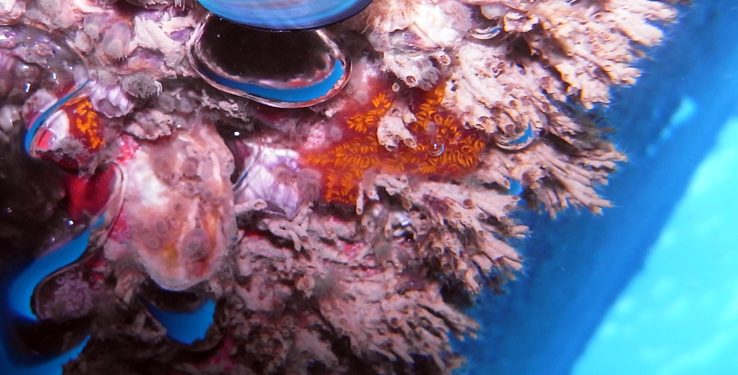California recently shared its experience from the first year of enforcing the Marine Invasive Species Program (MISP) and the Biofouling Management Regulations, that apply to vessels arriving at California ports from 1 October 2017. The California State Lands Commission emphasised that the International Anti-Fouling System (AFS) Certificate issued by a vessel’s flag state is not enough to document effectiveness of a vessel’s antifouling coating in terms of preventing the transfer of marine invasive species.
To remind:
- The Biofouling Management Regulations were adopted on 1 October 2017 with a phase-in implementation schedule based on a vessel’s dry-docking schedule.
- They apply to vessels that are 300 gross registered tons and above that carry, or are capable of carrying, ballast water.
- Such vessels are required to establish a strategy for how to manage biofouling, the Biofouling Management Plan (BMP), and be able to document that the strategy has been implemented, the Biofouling Record Book.
According to data provided by the Gard P&I Club, on 17 October 2018, the California State Lands Commission (SLC) gave a webinar to share its experience from the first year of enforcing the new biofouling regulations. noting that, so far, most biofouling deficiencies have been related to issues with:
- the effective coating lifespan requirements; and
- dry-dock support strips management, which is one of the niche areas mentioned in the regulations.
According to the SLC, some vessels present their IMO AFS Certificate or manufacturers product data sheets as evidence of the vessel’s effective coating lifespan upon arrival. However, the AFS Certificate only verifies that the vessel does not have a harmful anti-fouling system, and a product data sheet says nothing about the vessel specific application of the anti-fouling coating.
The SLC therefore highlighted the importance of documenting, in the vessel’s BMP, details such as the type of anti-fouling coating applied for each section of the vessel, its manufacturer, dry film thickness, expected life time as determined by the manufacturer, etc. A statement from the coating manufacturer to this effect could also be presented.
Niche areas, such as sea chests, bow thrusters, propeller shafts, inlet gratings, dry-dock support strips, etc., are hotspots for extensive communities of biofouling organisms which must be properly managed.
According to the SLC, the most problematic niche area is the dry-dock support strips. Many vessels apparently lack a proper strategy for how this niche area shall be managed. One solution proposed by the SLC is to plan for the dry-dock support strips to be placed in different locations at each dry docking, hence allowing the complete area of the vessel’s hull to be coated at regular intervals.
In addition to potential transfers of marine invasive species, fouling on a vessel’s hull significantly reduces hydrodynamic performance, increases fuel consumption and impacts vessels’ emissions. Lack of an international regulatory framework has prompted several local governments, as California and New Zealand, to act and develop unilateral biofouling regulations.
Recommendations
Gard advises operators:
- To review their vessels’ BMPs, make sure each BMP outlines an effective biofouling compliance strategy for the vessel in question and that it contains all the details required to ensure compliance with any local regulations at force.
- For vessels trading to California ports, it may be necessary to revise those sections of the BMP that deal with issues related to effective coating lifespan and dry-dock support strips in order to ensure compliance.
- An up-to-date BMP and Biofouling Record Book will assist government officials to quickly and efficiently assess the vessel’s potential for biofouling risk and thus minimise any delays to vessel operations.






























































